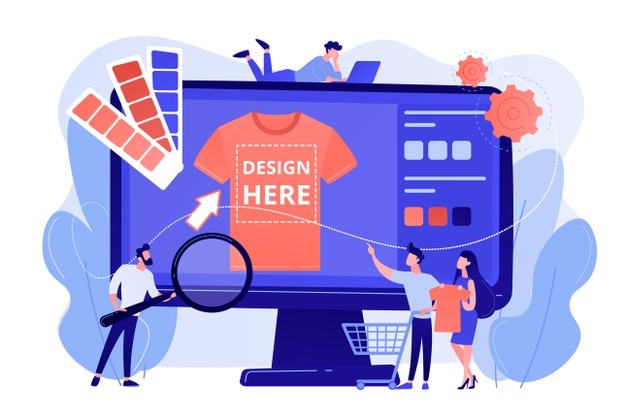What if we tell you, you can buy customized things without paying extra money?

Do you think it’s a utopia? It’s not!
Producing customized items by charging mass-market prices is a relatively new concept called mass customization. It’s designed to provide users with special treatment at possibly affordable prices, and as you can guess, people worldwide fall in love with this strategy.
We can feel you are still slightly shocked. However, it’s not that hard to organize. If you would love to see your customers’ eyes sparkle by introducing mass customization, we can help you with that.
As a first step, let’s answer a question that is probably rotating in your head right now: “What is mass customization, and what’s the goal for using it?“
What is mass customization?
Mass customization implies that a company allows customers to buy goods or services by modifying some elements. Meanwhile, customers pay the same price or a little more than they would buy from the mass market. The emphasis of this strategy is to combine flexibility, integration, and personalization while keeping low unit costs.
Mass customization aims to follow a customer-driven approach and sell products and services that reflect customers’ choices. This is possible by making most products modular, making it easier to change certain production parts and customize.
Mass customization significantly increases customer satisfaction and loyalty as it combines the two key points; it offers high-volume manufacturing for low-cost.
How does mass customization work?
Instead of buying ready products from the retailer’s design, customers receive a list of predefined features and an opportunity to choose the final features of the product they will buy. The final price they should pay for the outcome depends on the customization level. It can go up or even down sometimes. In some cases, the price might equal the product’s base price.
To utilize this approach, companies usually use computer-aided information and individual customization.

4 types of mass customization
Offering customization options does not mean companies allow customers to construct the product or service from scratch. This means companies find the right balance in choosing which products or services can be customized and how that will affect the company expenses.
To understand this better, let’s dive into four main types of mass customization. This might also help you choose an appropriate model for your business.
Collaborative: tight communication with customer
Collaborative customization is the mass customization type, which requires the tightest collaboration with a customer who makes an order. This type of approach is usually applied when customers are not sure what they want, and it’s hard for them to articulate their needs.
In this case, business representatives communicate with clients and reveal their requirements step by step. Clients receive a predefined list of features to choose from. However, all the main features of the product are subject to adjustments.
Example
When people buy spectacles, they can choose any frame and glass quality presented in the store. However, they can also order a completely customized item, and it’s pretty likely, the price will be the same as for another ready spectacle.
Also, many companies allow users to use a 3D configurator and send their final design samples to brands for production.
Adaptive: allowing buyers to customize on their own
Adaptive customization initially produces standard products without receiving personalized orders. However, the products go with different customization modes, allowing users to adapt features to their diverse needs and occasions later.
So, in this case, users are aware of the limited scope of customization features in advance. They can’t have more variable features than they initially have while purchasing.
Example
You buy a coat, which has an adjustable warm lining. You can put it on during the winter or remove it to wear during warmer weather. When buying the coat, you initially learn of two possible customization options, and the producers can’t offer you new variable features post-purchase.
Another example of adaptive customization is lighting for a house, which has different modes according to the user’s mood. They can turn into a darker night mode or light up in different colors for home parties.
Cosmetic: customization of standard product’s packaging
As you might guess from the name, cosmetic customization is used to change the product’s shape rather than its core functionality. In this case, customers want the standard product with standard functionality. However, they require a personalized way of product presentation or packaging.
Cosmetic customization might refer to a product’s packaging, labels, printed text on the product, and similar.
Example
One of the famous examples of cosmetic customization belongs to Apple. When ordering AirPods from the company’s official website, buyers might require any text to be on the AirPods charging case. So, each AirPod user utilizes the same functionality and quality of earbuds. However, they customize the packaging.
Another example of cosmetic customization is ordering T-shirts with any texted or animated print required by the customers.
Transparent: customization based on customer analysis
A transparent customization is a data-driven approach to customization, mainly relying on the brand’s ability to analyze its customers and predict their needs. In this case, companies produce personalized products with customized features by predicting their customers’ needs.
Consequently, customers do not have to spend extra time explaining personal requirements to the manufacturers. Customers don’t even know that they buy customized products.
Example
A local bakery can reveal the main requirements and tastes of the people residing in the neighborhood. Gradually, the bakery can stop producing the type of sweets that don’t sell well to locals and increase the production of items that have higher demand from customers.
Customers might not realize the bakery uses customization, but this will positively influence customer satisfaction.
To sum up
Mass customization is an important trend with fast-paced customers who love personalization and want to have extra features all the time. And though mass customization is usually associated with retail, it’s also a concept that can be utilized in the service sector.
For example, a software provider might include a basic functionality as a demo version and offer additional customizable features to individual clients.
Therefore, no matter the industry your business operates in. If you want to squeeze maximum efficiency from your business operations and take customer satisfaction to a whole new level, don’t ignore the growing customization trends.







